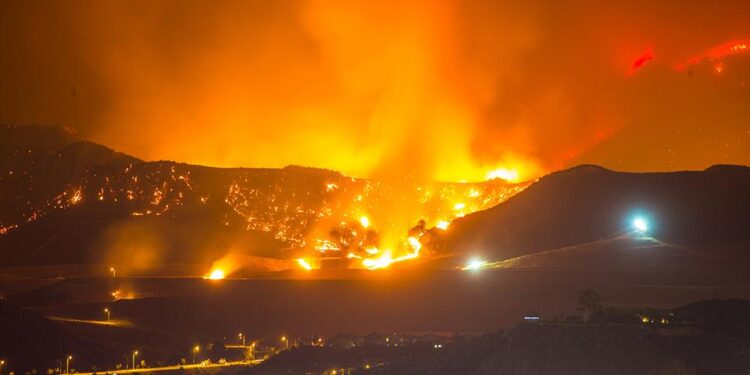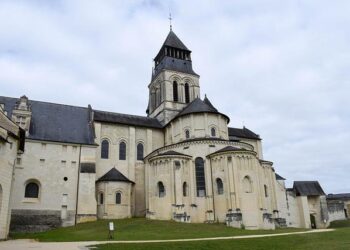In recent days, the Western Balkans have faced a severe surge in wildfire activity, with Kosovo, North Macedonia, and Albania grappling with widespread blazes. According to Gazeta Express, Kosovo has reported a staggering 57 wildfires, while North Macedonia has battled 27 and Albania 34. The relentless fires have posed significant challenges to authorities and residents alike, prompting urgent responses to contain the damage and prevent further spread amid rising temperatures and dry conditions.
Kosovo, North Macedonia, and Albania Face Escalating Wildfire Crisis Amid Dry Conditions
The prolonged dry spell across the Balkans has fueled a sharp increase in wildfires, with Kosovo, North Macedonia, and Albania reporting alarming figures in recent days. Kosovo alone has confronted 57 distinct wildfires, straining local firefighting units and emergency services. North Macedonia and Albania are not far behind, grappling with 27 and 34 fires respectively. These statistics reflect the growing volatility of the region’s climate, as unseasonably high temperatures and scarce rainfall create ideal conditions for fires to ignite and spread quickly.
Authorities have issued urgent warnings, emphasizing the need for vigilance and community cooperation. Firefighters remain on high alert, deploying aircraft and ground crews to affected areas in an effort to contain the flames. Key risk factors contributing to the crisis include:
- Extended drought periods reducing soil moisture and drying out vegetation
- Strong winds accelerating fire movement and complicating containment efforts
- Human activity suspected to play a role in several ignition points
| Country | Fires Reported | Major Affected Regions | Containment Status |
|---|---|---|---|
| Kosovo | 57 | Prizren, Peja | Ongoing operations, 65% contained |
| North Macedonia | 27 | Bitola, Kumanovo | Containment progressing, 55% contained |
| Albania | 34 | Shkodra, Vlora | High alert, 50% contained |
Analyzing the Causes and Impact of Recent Wildfires Across the Balkans
The recent surge in wildfires across Kosovo, North Macedonia, and Albania has been primarily attributed to a combination of prolonged drought conditions and unusually high temperatures, exacerbated by strong winds that accelerated the spread of flames. Human activities, including unattended campfires, agricultural burning, and negligence, have further intensified this emergency, placing tremendous strain on regional firefighting resources. Environmental experts warn that these patterns reflect a disturbing trend linked to climate change, underscoring the urgent need for cross-border cooperation in fire prevention and rapid response strategies.
The impact of these fires extends beyond immediate destruction of vast forested areas, threatening biodiversity, air quality, and local economies dependent on agriculture and tourism. Communities are grappling with evacuations and loss of property, while emergency services contend with resource shortages. Below is a summary of wildfire incidents and affected hectares during the recent outbreak:
| Country | Number of Fires | Approximate Area Burned (ha) | Evacuated Residents |
|---|---|---|---|
| Kosovo | 57 | 1,230 | 1,100 |
| North Macedonia | 27 | 720 | 450 |
| Albania | 34 | 860 | 600 |
- Environmental damage: Loss of native flora and fauna habitats.
- Public health risks: Increased respiratory issues due to smoke inhalation.
- Economic losses: Disruption in agriculture and tourism sectors.
- Infrastructure strain: Overwhelmed firefighting and emergency services.
Urgent Strategies and Community Measures Needed to Enhance Wildfire Preparedness and Response
With wildfires raging across Kosovo, North Macedonia, and Albania at an alarming rate, immediate action is paramount to reduce their devastating impact on ecosystems, communities, and infrastructures. Early detection systems, such as advanced satellite monitoring and local fire watchtowers, must be scaled urgently to catch flare-ups before they spread uncontrollably. Additionally, equipping firefighting teams with modern tools, including drones for aerial surveillance and rapid-response vehicles, will significantly enhance containment capabilities. Cross-border coordination between affected countries should be intensified, enabling resource sharing, joint training exercises, and unified communication channels to prevent isolated efforts from faltering.
Communities living in wildfire-prone zones play a crucial frontline role in mitigation. Local governments need to expand awareness programs that educate residents on fire-safe practices, such as creating defensible spaces around homes and emergency evacuation plans tailored to their specific terrains. Important measures include:
- Routine clearing of dry vegetation near residential areas
- Establishing volunteer fire brigades trained in immediate response
- Promoting sustainable land management to reduce flammable material buildup
| Country | Wildfires (recent days) | Key Readiness Focus | ||||||||
|---|---|---|---|---|---|---|---|---|---|---|
| Kosovo | 57 | Enhanced surveillance & rapid response teams | ||||||||
| North Macedonia | 27 | Community engagement & evacuation drills | ||||||||
| Albania | With wildfires raging across Kosovo, North Macedonia, and Albania at an alarming rate, immediate action is paramount to reduce their devastating impact on ecosystems, communities, and infrastructures. Early detection systems, such as advanced satellite monitoring and local fire watchtowers, must be scaled urgently to catch flare-ups before they spread uncontrollably. Additionally, equipping firefighting teams with modern tools, including drones for aerial surveillance and rapid-response vehicles, will significantly enhance containment capabilities. Cross-border coordination between affected countries should be intensified, enabling resource sharing, joint training exercises, and unified communication channels to prevent isolated efforts from faltering. Communities living in wildfire-prone zones play a crucial frontline role in mitigation. Local governments need to expand awareness programs that educate residents on fire-safe practices, such as creating defensible spaces around homes and emergency evacuation plans tailored to their specific terrains. Important measures include:
|
















